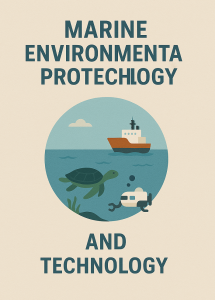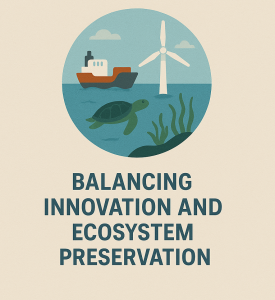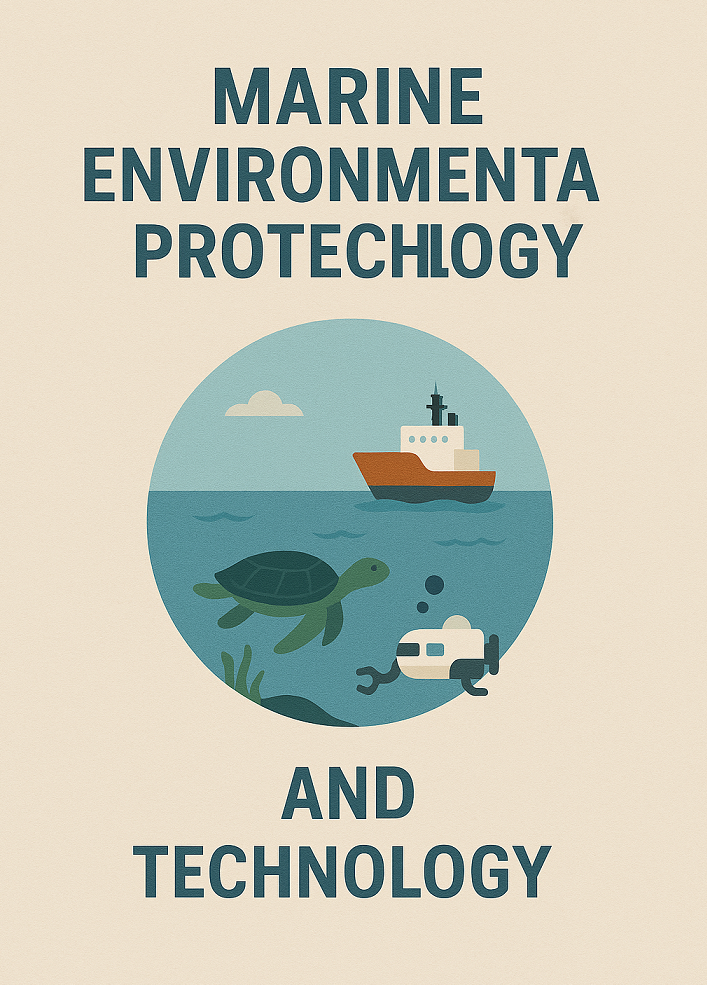Explore modern marine conservation efforts, including how offshore wind farms can coexist with ocean ecosystems and how bioenergy and biomethane contribute to decarbonization without harming the sea.

🌍 🌊 Can Clean Energy and Marine Life Thrive Together?
As the world accelerates toward clean energy solutions, our oceans are becoming a focal point for sustainable development. Offshore wind farms and bioenergy systems are vital for reducing carbon emissions—but how can we ensure they don’t harm the very marine environments they aim to protect?
This article explores two key areas of marine conservation in the renewable energy era:
-
🌬️ The coexistence of offshore wind farms with marine ecosystems and fisheries
-
🔋 The use of bioenergy and biomethane to decarbonize sectors while safeguarding oceanic health
⚙️ Offshore Wind Farms & Marine Coexistence
What Are Offshore Wind Farms?
These are large-scale wind turbine installations located at sea. They harness strong and consistent ocean winds to generate renewable electricity, often supplying power to millions of homes.

🌊 Environmental & Social Challenges
While offshore wind energy offers zero-emission power, concerns have arisen about:
-
Disruption of marine habitats due to turbine foundations and cable laying
-
Impact on migratory patterns of birds and marine mammals
-
Navigation safety risks for vessels and fishing boats
-
Loss of traditional fishing grounds or unintended fish aggregation around turbines
✅ Conservation Strategies in Practice
To ensure coexistence with nature and industries like fisheries and shipping, developers and marine authorities are adopting several solutions:
🐟 Environmental Impact Assessments (EIAs)
Detailed studies to identify and mitigate ecological risks before installation begins.
🚢 Navigational Safety Zones
Integrated design to maintain clear paths for maritime traffic and emergency operations.
🎣 Fishing Industry Collaboration
Consultation with local fishers to minimize disruption and preserve livelihoods.
📡 Smart Monitoring Systems
Use of underwater sensors, drones, and acoustic technologies to track marine species around turbines in real-time.
🪸 Artificial Reef Effects
Some offshore wind structures unintentionally create habitats for marine life, promoting biodiversity.
💬 “With science-based planning, offshore wind farms can contribute to both clean energy and marine conservation.” — European Marine Board, 2024
🔋 Bioenergy & Biomethane: Renewable and Ocean-Friendly
What Is Bioenergy?
Bioenergy refers to renewable energy derived from organic materials, such as:
-
Agricultural waste
-
Forestry residues
-
Algae
-
Food industry byproducts
What Is Biomethane?
Biomethane is a clean, upgraded form of biogas that can replace natural gas in:
-
Electricity production
-
Heating systems
-
Marine and land transport (bio-LNG for ships)
🌱 Marine-Linked Bioenergy Innovations
🧪 Algae-Based Biofuels
Algae cultivated in saltwater ponds or offshore facilities are being tested for next-gen marine biofuels.
♻️ Coastal Waste Conversion
Organic waste from port cities, fish processing plants, and coastal farms can be converted to biogas, reducing marine pollution.
⚓ Maritime Applications
-
Bio-LNG is already powering eco-friendly cargo ships in the EU
-
Ports are piloting bioenergy hubs for vessel shore power
🔍 Environmental Benefits
-
✅ Reduces dependence on fossil fuels
-
✅ Promotes circular economy (waste-to-energy)
-
✅ Generates lower NOx and CO2 emissions than traditional fuels
-
✅ Uses non-food biomass, avoiding competition with agriculture
📊 Real-World Applications
| Initiative | Country | Description |
|---|---|---|
| North Sea Wind Cluster | Germany | Large-scale offshore wind zone with marine protection zones |
| BioShip Project | EU | Ships running on algae-based biofuels in controlled test routes |
| “Wind and Fisheries Alliance” | UK | Collaborative zoning and compensation model for wind/fishing sectors |
| Marine Waste-to-Energy Plant | Japan | Converts coastal waste to biomethane for port electricity |
🔮 Future Outlook: Innovation, Inclusion, and Integration
Trends to Watch in 2025 and Beyond:
-
🌐 Marine spatial planning with AI for optimized offshore installations
-
🧬 Genetic tracking of marine species to monitor habitat shifts around turbines
-
🛰️ Satellite + drone surveillance to measure marine noise pollution
-
💼 Blue jobs in renewable energy, including eco-engineers and marine ecologists
-
🧪 Bioenergy labs partnering with universities and maritime institutes
❓ FAQs – People Also Ask
❓Do offshore wind farms harm marine life?
When not properly planned, they can. However, with environmental assessments and marine monitoring, the impacts can be greatly reduced or even reversed in some cases.
❓What’s the difference between biogas and biomethane?
Biogas is a raw mixture of methane and CO₂. Biomethane is the purified version that can be injected into natural gas grids or used as fuel.
❓Can fishing and offshore wind coexist?
Yes. Many projects use marine zoning, compensation models, and multi-use platforms to allow fishers and energy developers to share marine space.
❓How is bioenergy related to ocean conservation?
Bioenergy offers a cleaner fuel alternative that reduces pollution, while certain marine-based feedstocks (like algae) are cultivated without harming biodiversity.
📚 References & Further Reading
✅ Conclusion
As marine conservation efforts evolve, the challenge is not about choosing between clean energy and ocean health—it’s about aligning them.
With technologies like bioenergy and biomethane reducing emissions and offshore wind farms designed to coexist with nature, we can move toward a future where energy, environment, and economy thrive together.
💙 Explore more sustainable ocean innovations at MaritimeEducation.com

